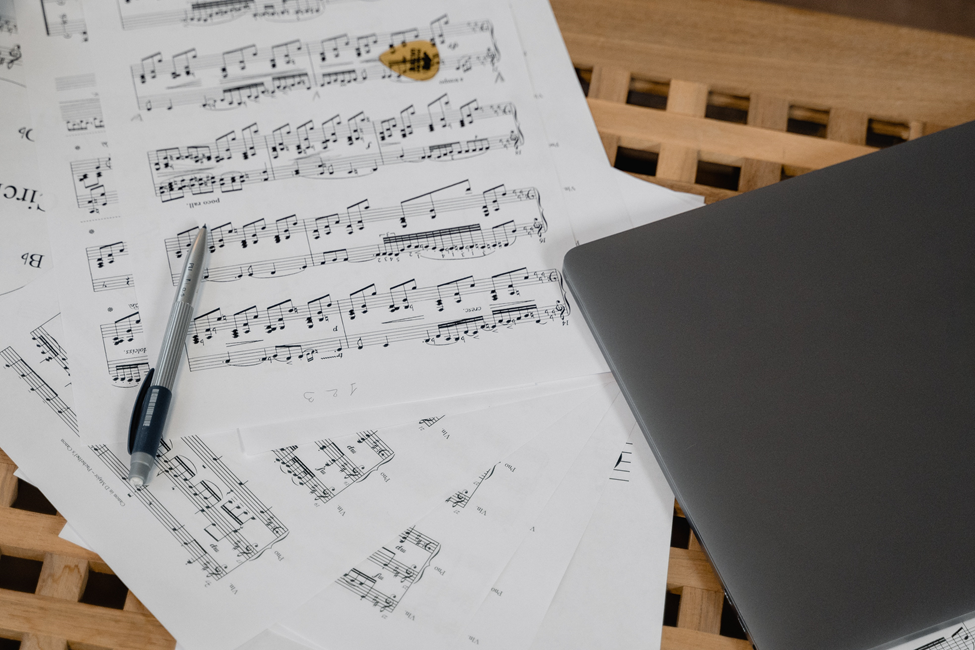
BecomeSingers is reader-supported. When you buy through links on our site, we may earn an affiliate commission. Learn More
Learning to read sheet music is essential if you want to develop your skills as a guitarist. You can either learn to read standard musical notation, which is challenging for beginners, or tablature, which is a more direct and simplified representation of the song structure.
We’ll provide you with all the knowledge you need to learn how to play a song on your guitar in any style you like. You will learn the fundamentals of standard notation and become a master at reading guitar tablature. So get ready to take your playing to the next level!
Table of Contents
How to Read Guitar Sheet Music
There are two main ways to read guitar sheet music; Standard musical notation and tablature, each with its own advantages and disadvantages. Reading standard notation requires prior knowledge of music theory, while tablature is more of a simple visual representation of the music and is typically favored by guitarists.
Standard Musical Notation

Musicians frequently write sheet music in standard musical notation for all instruments, including the guitar. Standard notation is a system of symbols that entails deciphering musical symbols on a musical staff, such as notes, rests, time signatures, and dynamics. Notes are written on the staff (which consists of five horizontal lines and four spaces) according to their pitch. The higher-pitched notes are written on a treble clef, while the lower-pitched ones are written on a bass clef. The tempo of the piece is indicated by a tempo marking or metronome marking placed at the beginning of the piece, along with another symbol that indicates the time signature.
Standard musical notation is essential for understanding music theory and learning how harmony, melody, and structure work together in music. However, a guitarist might not find this to be their preferred method of reading music. And that’s because musical notation doesn’t show you where you should place your fingers on the fretboard when you’re learning to play a new song, unlike tablature (or tab), which is a form of musical notation specifically designed for the guitar.
Guitar Tablature (or Tab)

Guitar tablature, also known as tab, is a form of musical notation designed specifically for fretted stringed instruments, including the guitar and ukulele.
It consists of horizontal lines that indicate musical notes, with the lowest E (the thickest string) at the bottom and the highest E (the thinnest string) at the top. It also uses numbers to tell you which note and string to play. Unlike standard notation, tabs don’t display rhythm or timing information, or any form of symbols or notes, making it a more suitable option for beginners due to how easy it is to read them and play along. You can learn to read guitar tablature without any prior knowledge of music theory or standard notation, which is an added bonus for beginners.
Reading Guitar Sheet Music [Step-by-Step Method]
As we mentioned earlier, there are two main ways to read guitar sheet music; Standard notation and guitar tablature. To begin, let’s go through the basics of reading standard notation.
Standard Notation

The symbol placed at the beginning of the musical staff that resembles the letter “G” is what we call the “treble clef.
There are 5 horizontal lines in the musical staff labeled from bottom to top as follows: E, G, B, D, and F. The spaces between the lines represent the notes F, A, C, and E in an ascending sequence.
Knowing where the notes are located on the treble clef will help you read standard musical notation and play the right notes on your instrument.
Let’s check out the different symbols you can find on a musical staff and what they represent using the phrase below.

At the beginning of the phrase, the time signature is 4/4, signifying four beats per bar and one beat for each quarter note.
The tempo of the song is 138 BPM, or beats per minute.
We can also see that there are three sharps (#) placed on the staff right after the treble clef, indicating that there are 3 sharp notes to be played in this composition, and the key in which the piece is written. Which is, in this case, the A Major key (A B C# D E F# G#.)
Now, let’s move on to the notes. Notice how there are eight eighth notes in each measure of this phrase. Rhythmically speaking, an eighth note is equivalent to a quarter note in length because it lasts for half a beat.
The duration of an eighth note is 1/8 of a complete note, or half a quarter note.
The most important thing you can do before starting to read standard notation is to familiarize yourself with note values. Note values determine how long a note is held, and they are represented by different symbols. The most common note values you’ll find on a musical staff are whole notes, half notes, quarter notes, and eighth notes.
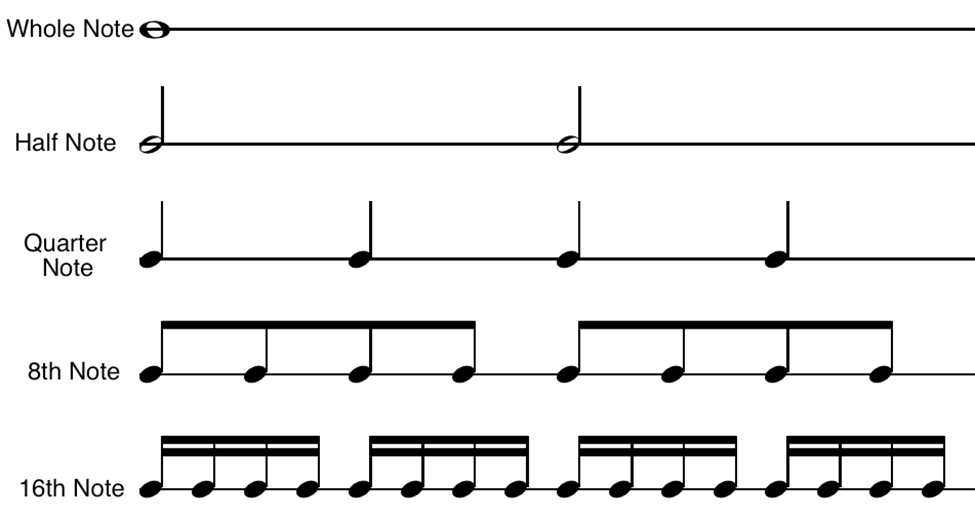
When it comes to standard notation, you will notice that it provides more details about the piece of music than tablature. It gives you the pitch, rhythm, tempo, and length of the notes the way the composer intended to write. You will have full control over the piece and know exactly how it was meant to be played.
And since music notation will let you have a deeper understanding of music theory and a more in-depth familiarity with musical elements like rhythm, harmony, and key signatures, you will be fully proficient at reading music, allowing you to become a more versatile guitarist and broaden your musical horizons. Finally, rather than being limited to simply the guitar, you’ll be able to perform your composition on any instrument you like.
However, learning to read standard notation can be a bit challenging for beginners since it takes time to master and be familiar with all the symbols, notations, and music theory that comes with standard notation. It also lacks the visual cues that guitar tablature provides for finger placement. So keep in mind that if you want to develop your guitar skills and music theory knowledge, you have to be ready and willing to put in the necessary work and time.
Guitar Tablature (or Tab)
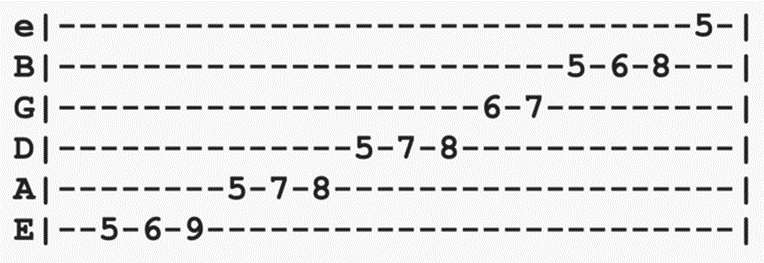
As we mentioned earlier, guitar tablature consists of horizontal lines that indicate musical notes or strings, with the lowest E (the thickest string) at the bottom and the highest E (the thinnest string) at the top. It also uses numbers to tell you which note and string to play.
In the picture above, we can clearly see the numbers 5,6,9,5,7,8, etc., but what do they actually mean? These numbers correspond to the fret that is going to be held down on that specific string.
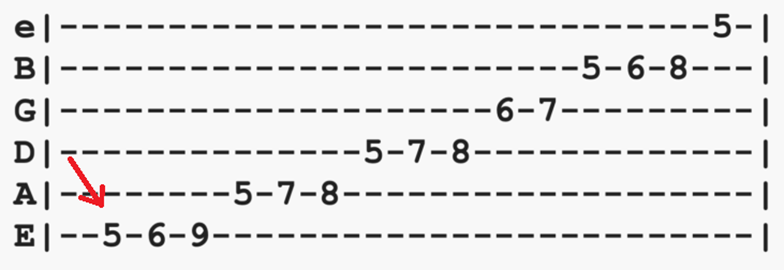
So the number 5 means that you’re going to be playing the 5th fret on the low E string. Followed by the 6th fret on the same string, then the 9th, Etc.
Sometimes, you will see stacked numbers like in the example below.
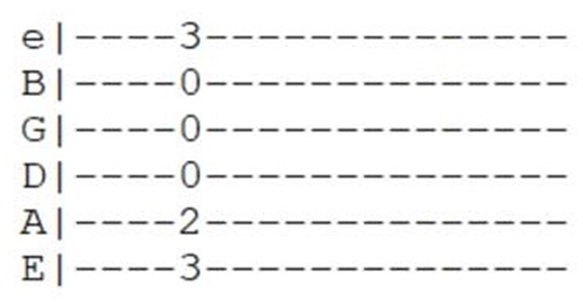
This indicates that those notes should be played or strummed together. So all you have to do is play the 3rd fret on the low E string, 2nd fret on the A string, 0 on the D, G, and B strings means that you have to play them open or unfretted and the 3rd fret on the high E string, all together.
Another symbol you might encounter is a curved line shown in the picture below.
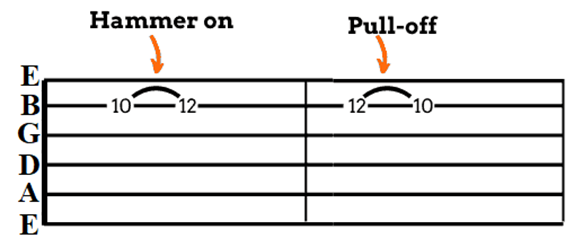
This curved line means that instead of playing the 10th fret, then the 12th fret on the B string, you have to hammer on the 12th fret while keeping your adjacent finger on the 10th fret. The pull-off is the opposite. You pluck the 12th fret on the B string, then pull off your finger while keeping your other finger on the 10th fret. In both cases, you pluck the string only once.
There are other symbols in guitar tablature that you might come across, such as:
- Slide: represented by the / symbol. It is a technique in which the player’s finger goes smoothly and continuously from one fret to another while maintaining the original note.
- Bends: represented by a bent or curved arrow ⮭⮮. This is a technique where the guitarist bends the string upward or downward to raise the note’s pitch, instead of moving to another fret.
- Vibrato: represented by the ~ symbol, vibrato is a technique where the guitarist rapidly shakes their finger back and forth on a single fret, creating a “shimmering” effect.
- Mute: represented by the x symbol. This is a technique where the guitarist mutes the instrument’s sound by gently pressing their palm against the strings.
These are some of the most commonly used symbols in guitar tablature. Make sure to memorize them and practice as frequently as you can until you’ve mastered them.
Guitar Chord Charts
If you’re a guitarist, you’ve probably seen the chart of basic chords below. Let’s see how you can play these chords on your guitar, using the C major chord as an example.
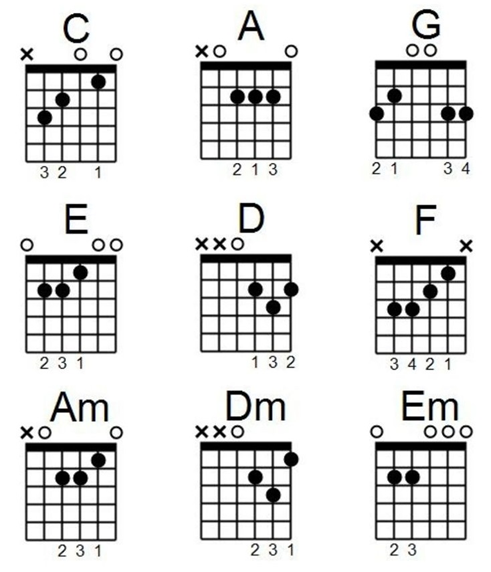
First, you must identify the chord name. The name of the chord is typically written in capital letters at the top of the chart. In this case, it’s the C major chord.
Second, look at the chord diagram. The chord diagram is a visual representation of the guitar’s fretboard. It shows the frets and strings of the guitar, with the horizontal lines representing the frets, and the vertical lines representing the strings, starting with the low E on the left to the high E on the right (E, A, D, G, B, E.)
Third, use the dots as guides for where to position your fingers on the fretboard. Sometimes, instead of dots, you’ll see numbers that correspond to the fingers you should use to strum the chord.
1- Index finger
2- Middle finger
3- Ring finger
4- Pinky finger
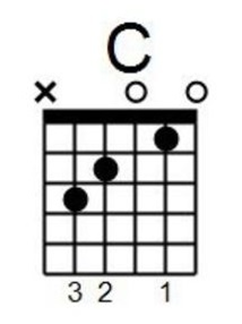
In this example, the numbers are written at the bottom of the chart, but you will across some charts in which the numbers appear in place of or inside the black dots.
The final two symbols you need to know are O, and X. A string marked with an O is open, while a string marked with an X is muted.
Keep in mind that even though no two chord charts will have the same exact layout, they should all have the same essential elements. Reading chord charts can take some getting accustomed to, but once you do, you’ll be able to quickly and seamlessly switch between chord progressions.
Check out are article on ‘How To Get Better at Guitar’.
FAQs
Should I learn to read standard notation?
Although learning to read standard notation will allow you to play virtually any song on guitar, this level of proficiency requires much practice and an in-depth understanding of music theory. So whether you want to put in the time and effort needed to learn to read standard notation is entirely up to you.
What are the 3 most used guitar chords?
The 3 most commonly used guitar chords are G Major (G, B, D), C Major (C, E, G), and D Major (D, F#, A). These chords can be heard in many popular songs and serve as the basis for many songs across different genres of music.
What is the hardest guitar chord to learn?
One of the hardest chords to play on the guitar is the F Major chord.  A beginner may struggle with the F chord because it requires accurate finger placement and a firm press on the strings. It also demands stretching the fingers to press down on several strings.
A beginner may struggle with the F chord because it requires accurate finger placement and a firm press on the strings. It also demands stretching the fingers to press down on several strings.
Conclusion
In conclusion, learning to read guitar sheet music is a crucial step to becoming an excellent guitar player. You can expand your musical horizons, develop your playing skills, and play with other artists by learning to read music notation and tablature. Just keep in mind that consistency and dedication are the key to your success. Whether you’re a beginner or an experienced guitarist, you should always push and challenge yourself and keep practicing until you can read and play any piece of guitar sheet music or tab with ease.
We hope that all the information and knowledge we provided today were clear and simple enough to follow and that we were able to make your learning journey a bit easier. Just be patient, stay persistent, and keep doing what you love!





